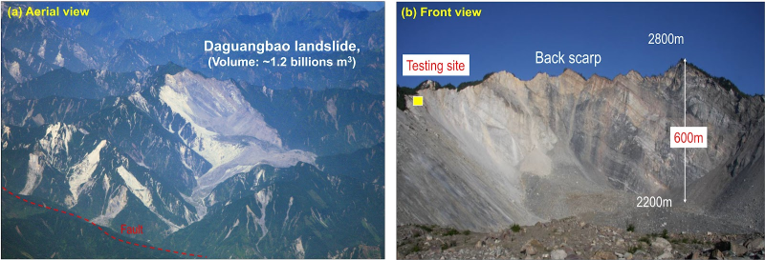Geological and Geotechnical Surveys of a Deep-Seated Rockslide
less than 1 minute read
The 2008 Ms 8.0 Wenchuan earthquake triggered more than 200 thousand landslides, including hundreds of catastrophic deep-seated rockslides. The Among these catastrophic rockslides, the Daguangbao (DGB) landslide is the largest landslide triggered by the Wenchuan earthquake (28°38′16.93′′ E, 104°06′02.35′′ N). The DGB landslide moved the slope mass with volume of 1.2 billion cubic meters to covered an area of 7.8 km2, and formed a landslide dam nearly 600 m high. We had done detailed geological, geophysical, and geotechnical surveys to study the failure mechanism of this giant landslide. I observed that a 3-meter-thick fault gouge was well extended along the sliding bed and with a maximum burial depth of ~400 m. Geotechnical laboratory experiment results suggested that the weakest sublayer within the fault gouge consists of silt soils with strain hardening and liquefaction behaviors. I concluded that slippery fault gouge and strong earthquake-induced shaking led to the giant landslide.

